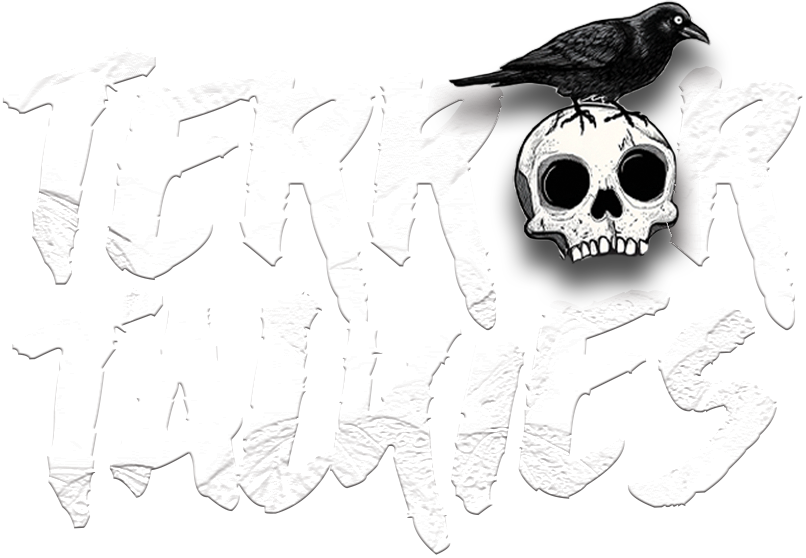Goth Music to Light Up Candles and Hold A Seance To🕯️⛧
- Rudradeep Biswas
- May 22
- 4 min read
by Rudradeep Biswas

Goth and horror are Siamese twins borne of the same fascination with darkness. It makes perfect sense that goth and goth-adjacent music has often commented vaguely, even obscurely, on the bizarre, the macabre, and the decrepit in horror media over the last few decades.
Horror has a much more ancient history relative to goth and has dealt with the themes of necromancy, occultism, and the like. Goths, meanwhile, have perennially been associated with the negative aspirations behind pursuing these practices. The stereotypes against the goth subculture can be unrelenting at times; that they are heretics, that they sneak off into shady rooms in parties to perform rituals, yada yada. What better way is there to neuter how goths are typecast… than to lean into these stereotypes and hold a séance to goth music?
Here is a catalog of gothic songs from horror films chock-full of unusual vocals, distorted guitars, and punchy drum beats—three of the most common musical elements of goth—for you all to conjure up spirits to.
1) “Exeloume” by Diamanda Galas from Bram Stoker's Dracula (1992)
“Exeloume” is the one track most conducive to connecting with the other realm (remember the scene with Dracula’s dead brides towards the end of Francis Ford Coppola’s Dracula?). Galas' vocals are so demented and dizzying that in Italy, they contributed to the perception that she was a Satanist. Specially hired by Coppola for her contrasting range, she added a lot of gravitas to the film by giving a soundscape to Mina’s powerlessness to darkness within her. Best to make the sign of the cross three times on all doors, windows, and mirrors of your house before putting this one on.
2) “(Don't Fear) the Reaper” by Blue Öyster Cult from Halloween (1978) and X (2022)
Gothic not in aesthetics, but in lyricism, “(Don’t Fear) the Reaper” is evocative of a romantic tryst with death. Having found its way into several films and TV shows in scenes where the Grim Reaper is just around the corner to take his toll, this track is somehow illustrative of the emotional response of goths. The longing for looking into the void (which is also the main motivation for many to conduct a séance) seems attainable, yet goth music as a medium offers enough distance through its dark overtones to sustain this fantasy.
3) “People Are Strange” by Echo & The Bunnymen and “Cry Little Sister” by Gerard McMahon from The Lost Boys (1987)
One of the biggest sources of flak that goths receive is their forthcoming attitude towards death. Well, normies, even if it may be so, decay is ostentatiously worse than death. Echo & the Bunnymen's cover of The Doors' “People Are Strange” drives this very hearse home—how loss of identity and decline is the real bloodsucker of humanity, in the heartfelt Lost Boys (1987). Jim Morrison, an incidental focal point of interest to the gothic subculture in the last century, is revered by the leather jacket-adorned vampires in this film, for he is the perfect image of the end of times. This lawlessness, juxtaposed with the film's main theme with its Sunday church-like choir, is likely to confuse any spirit if you call on it from the other realm.

4) “Bela Lugosi’s Dead” by Bauhaus from The Hunger (1983)
Bauhaus fathered in the gothic rock movement in the 1970s with its thumping bass and distorted guitars several years before marking ‘King of Glam’ David Bowie’s turn as a vampire. An ode to the first on-screen Dracula and the eponymous Hungarian icon’s funeral, “Bela Lugosi’s Dead” is juxtaposed by Tony Scott with the intro to his debut film where he compares a bat’s blood frenzy to a vampire’s bid for immortality.
5) “The Eternal” by Joy Division, “Goo Goo Muck” by The Cramps, and “Spellbound” by Siouxsie and the Banshees from American Horror Story and Wednesday
Bela Lugosi’s Dead marked a watershed moment in the gothic subculture, and without it, the likes of Joy Division, The Cramps, and Siouxsie and the Banshees wouldn’t have had song credits in TV shows such as American Horror Story and Wednesday. Ian Curtis passed away around this time in 1980, following which he became goth’s north star owing to his existentialist lyrics and a baritone that elicited gloom in the listener.
6) “Song to the Siren” by This Mortal Coil from Lost Highway (1997)
If you do go ahead with this playlist for your séance but begin to feel a shift in the air midway through, you can always play This Mortal Coil’s cover of Tim Buckley’s “Song to The Siren” to cleanse your space. The prayer-like song from David Lynch’s Lost Highway (1997)—not a horror film in the strictest of the word yet a horrific tale about male anxiety and obsession—is a good sonical accompaniment as you burn some cedar and manifest good vibes
The most important thing to remember before communicating with spirits is, of course, to proceed with the same openmindedness that goths have in their beliefs and outlook. On a closing note, here is a list of some eclectic questions to ask a spirit during a seance (unless you’re heading into it with a certain goal or person in mind):
“What time are you from?” (To discern whether the spirit you’re conjuring is a 16th-century conquistador or your great grandfather.)
“Do you have good intentions?” (For your own safety.)
“Is Marilyn Manson goth?” (He’s not.)
“Why did Peter Murphy sell out and do Twilight?” (We really need to know!)
“What do you think of today’s world?” (For their opinion on postmodernism.)
“Can you suggest some clubs for a baby-bat aspirant like me?” (Because we all want community.)
